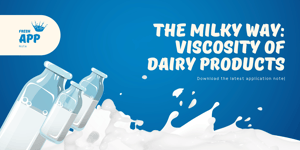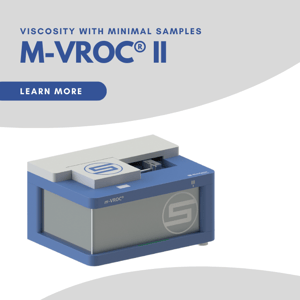
Application Note Download
Milk, the precursor of all dairy products, is a liquid produced by the mammary glands of mammals and commonly obtained from cows, buffaloes, goats, and sheep. Milk typically undergoes pasteurization, homogenization, and separation processing, which alter the viscosity by destroying any harmful micro-organisms, decreasing the size of fat droplets, and separating out the cream.
Bacterial fermentation of milk at a suitable temperature range produces yogurt, a dairy product with a tart taste and a thicker consistency. This higher viscosity is due to aggregation of casein micelles into a gel structure (see blog posts on intrinsic viscosity of sodium caseinate & viscosity of sodium caseinate milk protein solutions).
Viscosity characterization of dairy products like milk and yogurt will help in designing more optimal processing methods, for improving quality control, and for making products with more desired texture, mouthfeel, and stability. In this app note, we explore the shear viscosity behavior of milk and yogurt dairy products across a wide range of shear rates with RheoSense viscometers, including the m-VROC II®.
Download our application note to learn more!
.jpeg?width=300&name=Woman%20scientist%2c%20documents%20and%20hands%20writing%20_575258496-min(1).jpeg)


.png?width=200&height=58&name=RheoSense%20Logo%20(REGISTERED).png)


-1.png?width=300&name=Mayo%20Viscosity%20m-VROC%20II%20App%20Note%20Tile%20(small)-1.png)
